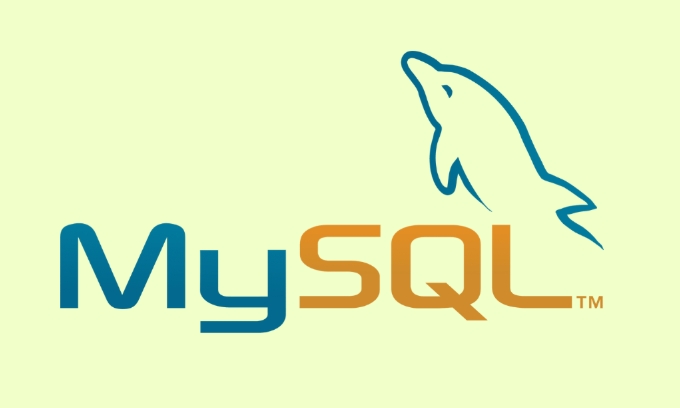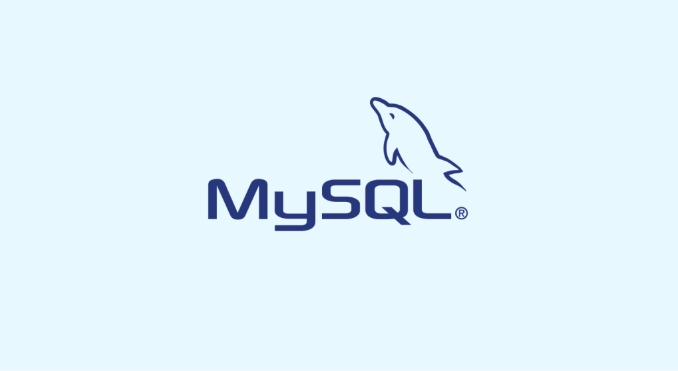Using the MySQL Shell for administration and scripting
Jul 13, 2025 am 02:43 AMThe method of connecting to the database by MySQL Shell is to use the mysqlsh command to start and enter connection information, or directly specify user@host:port on the command line; 1. The startup method is flexible, supports interactive input or directly specifying parameters; 2. Pay attention to SSL settings and authentication methods, especially when remote connections, to ensure correct permissions and passwords; 3. After entering the shell, the default is SQL mode, which can perform regular SQL operations; 4. Support switching to JS or Python mode to write complex scripts to achieve automated tasks; 5. Script writing requires attention to mode selection, output format, exception handling and file saving; 6. Provide practical tips, such as viewing the current mode, switching paths, multi-instance connections, and consulting help documents, which help solve common problems.

MySQL Shell is a powerful tool that can not only be used to manage databases, but also write scripts to automate operations. If you have used traditional MySQL client before, you may think it is a bit different, but it is actually more flexible to use.

How to connect to the database?
The first step with MySQL Shell is to connect to the database instance. You can start with the mysqlsh command and enter the connection information. You can also specify it directly on the command line:

mysqlsh user@host:port
Remember to confirm whether SSL is used and whether the authentication method is correct when connecting, especially when connecting to a remote server. If the password is incorrect or the permissions are insufficient, the Shell will prompt an error. At this time, you need to check the user permissions and access control settings.
Common commands for managing databases
After entering the shell, the default is SQL mode, and you can execute SQL statements like you normally do. For example, check the current database, user, table structure, etc.:

\sql USE mydb; SHOW TABLES; DESCRIBE mytable;
However, MySQL Shell also supports JavaScript and Python modes, which are suitable for batch operations or scripting. For example, switch to JS mode:
\js
Then you can write some simple logic, such as traversing all databases:
session.runSql("SHOW DATABASES;");
var result = session.fetchAll();
result.forEach(function(row) { print(row[0]); });This way you can write scripts in the shell for tasks such as data collection, status checking, etc.
Script writing tips and precautions
If you plan to write automation scripts using MySQL Shell, there are a few things to note:
- Pattern selection : JS and Python patterns are more suitable for writing scripts with complex logic, while SQL patterns are suitable for simple queries.
- Output format : The default output is in table form. It is recommended to change it to JSON or silent mode in the script to facilitate subsequent processing.
- Exception handling : The script will not automatically exit when an error occurs when it runs. It is best to add try-catch or judge the return value.
- Save script files : You can save common scripts as
.jsor.pyfiles and load and execute them with thesourcecommand.
For example, you can write a script to check the master-slave copy status:
try {
var res = dba.getReplicaSet().status();
print("Replication status:", res.ok);
} catch (e) {
print("Error checking replication:", e);
}Such scripts can be run regularly and used together with the monitoring system.
Tips and FAQs
Sometimes you will encounter some strange problems, such as the shell prompts "Session not active" or "Command not found", which is usually because the pattern is not correct or the syntax is incorrect. A few tips to remember:
- You can use
\statusto view the current mode - Switch mode with
\sql,\jsor\py - Pay attention to the difference between relative and absolute paths for script path issues
- When connecting multiple instances, use
\\connectto switch context
In addition, the Shell help document is actually quite complete. Enter \help or function name and add .help() to quickly check the usage.
Basically all this is it. MySQL Shell has many functions, but after mastering the basic operations, you will find that it is much better than traditional clients.
The above is the detailed content of Using the MySQL Shell for administration and scripting. For more information, please follow other related articles on the PHP Chinese website!

Hot AI Tools

Undress AI Tool
Undress images for free

Undresser.AI Undress
AI-powered app for creating realistic nude photos

AI Clothes Remover
Online AI tool for removing clothes from photos.

Clothoff.io
AI clothes remover

Video Face Swap
Swap faces in any video effortlessly with our completely free AI face swap tool!

Hot Article

Hot Tools

Notepad++7.3.1
Easy-to-use and free code editor

SublimeText3 Chinese version
Chinese version, very easy to use

Zend Studio 13.0.1
Powerful PHP integrated development environment

Dreamweaver CS6
Visual web development tools

SublimeText3 Mac version
God-level code editing software (SublimeText3)

Hot Topics
 Establishing secure remote connections to a MySQL server
Jul 04, 2025 am 01:44 AM
Establishing secure remote connections to a MySQL server
Jul 04, 2025 am 01:44 AM
TosecurelyconnecttoaremoteMySQLserver,useSSHtunneling,configureMySQLforremoteaccess,setfirewallrules,andconsiderSSLencryption.First,establishanSSHtunnelwithssh-L3307:localhost:3306user@remote-server-Nandconnectviamysql-h127.0.0.1-P3307.Second,editMyS
 Analyzing the MySQL Slow Query Log to Find Performance Bottlenecks
Jul 04, 2025 am 02:46 AM
Analyzing the MySQL Slow Query Log to Find Performance Bottlenecks
Jul 04, 2025 am 02:46 AM
Turn on MySQL slow query logs and analyze locationable performance issues. 1. Edit the configuration file or dynamically set slow_query_log and long_query_time; 2. The log contains key fields such as Query_time, Lock_time, Rows_examined to assist in judging efficiency bottlenecks; 3. Use mysqldumpslow or pt-query-digest tools to efficiently analyze logs; 4. Optimization suggestions include adding indexes, avoiding SELECT*, splitting complex queries, etc. For example, adding an index to user_id can significantly reduce the number of scanned rows and improve query efficiency.
 Performing logical backups using mysqldump in MySQL
Jul 06, 2025 am 02:55 AM
Performing logical backups using mysqldump in MySQL
Jul 06, 2025 am 02:55 AM
mysqldump is a common tool for performing logical backups of MySQL databases. It generates SQL files containing CREATE and INSERT statements to rebuild the database. 1. It does not back up the original file, but converts the database structure and content into portable SQL commands; 2. It is suitable for small databases or selective recovery, and is not suitable for fast recovery of TB-level data; 3. Common options include --single-transaction, --databases, --all-databases, --routines, etc.; 4. Use mysql command to import during recovery, and can turn off foreign key checks to improve speed; 5. It is recommended to test backup regularly, use compression, and automatic adjustment.
 Handling NULL Values in MySQL Columns and Queries
Jul 05, 2025 am 02:46 AM
Handling NULL Values in MySQL Columns and Queries
Jul 05, 2025 am 02:46 AM
When handling NULL values ??in MySQL, please note: 1. When designing the table, the key fields are set to NOTNULL, and optional fields are allowed NULL; 2. ISNULL or ISNOTNULL must be used with = or !=; 3. IFNULL or COALESCE functions can be used to replace the display default values; 4. Be cautious when using NULL values ??directly when inserting or updating, and pay attention to the data source and ORM framework processing methods. NULL represents an unknown value and does not equal any value, including itself. Therefore, be careful when querying, counting, and connecting tables to avoid missing data or logical errors. Rational use of functions and constraints can effectively reduce interference caused by NULL.
 Calculating Database and Table Sizes in MySQL
Jul 06, 2025 am 02:41 AM
Calculating Database and Table Sizes in MySQL
Jul 06, 2025 am 02:41 AM
To view the size of the MySQL database and table, you can query the information_schema directly or use the command line tool. 1. Check the entire database size: Execute the SQL statement SELECTtable_schemaAS'Database',SUM(data_length index_length)/1024/1024AS'Size(MB)'FROMinformation_schema.tablesGROUPBYtable_schema; you can get the total size of all databases, or add WHERE conditions to limit the specific database; 2. Check the single table size: use SELECTta
 Handling character sets and collations issues in MySQL
Jul 08, 2025 am 02:51 AM
Handling character sets and collations issues in MySQL
Jul 08, 2025 am 02:51 AM
Character set and sorting rules issues are common when cross-platform migration or multi-person development, resulting in garbled code or inconsistent query. There are three core solutions: First, check and unify the character set of database, table, and fields to utf8mb4, view through SHOWCREATEDATABASE/TABLE, and modify it with ALTER statement; second, specify the utf8mb4 character set when the client connects, and set it in connection parameters or execute SETNAMES; third, select the sorting rules reasonably, and recommend using utf8mb4_unicode_ci to ensure the accuracy of comparison and sorting, and specify or modify it through ALTER when building the library and table.
 Aggregating data with GROUP BY and HAVING clauses in MySQL
Jul 05, 2025 am 02:42 AM
Aggregating data with GROUP BY and HAVING clauses in MySQL
Jul 05, 2025 am 02:42 AM
GROUPBY is used to group data by field and perform aggregation operations, and HAVING is used to filter the results after grouping. For example, using GROUPBYcustomer_id can calculate the total consumption amount of each customer; using HAVING can filter out customers with a total consumption of more than 1,000. The non-aggregated fields after SELECT must appear in GROUPBY, and HAVING can be conditionally filtered using an alias or original expressions. Common techniques include counting the number of each group, grouping multiple fields, and filtering with multiple conditions.
 Implementing Transactions and Understanding ACID Properties in MySQL
Jul 08, 2025 am 02:50 AM
Implementing Transactions and Understanding ACID Properties in MySQL
Jul 08, 2025 am 02:50 AM
MySQL supports transaction processing, and uses the InnoDB storage engine to ensure data consistency and integrity. 1. Transactions are a set of SQL operations, either all succeed or all fail to roll back; 2. ACID attributes include atomicity, consistency, isolation and persistence; 3. The statements that manually control transactions are STARTTRANSACTION, COMMIT and ROLLBACK; 4. The four isolation levels include read not committed, read submitted, repeatable read and serialization; 5. Use transactions correctly to avoid long-term operation, turn off automatic commits, and reasonably handle locks and exceptions. Through these mechanisms, MySQL can achieve high reliability and concurrent control.






